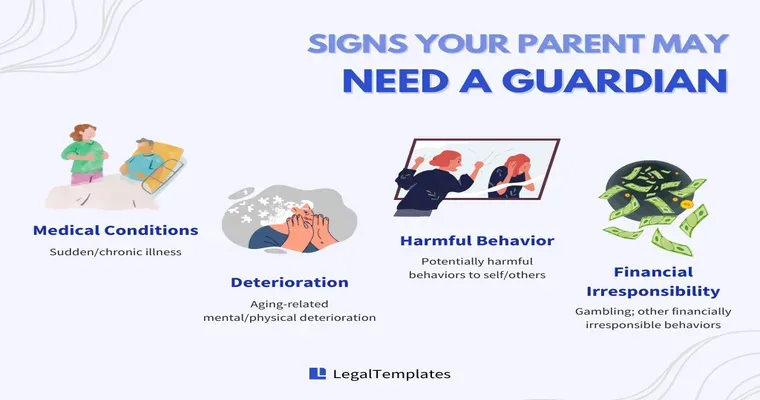Navigating the process of obtaining "guardianship" of an "elderly parent" can be both emotionally and legally complex. As your parent ages, they may face challenges related to "health issues", "cognitive decline", or other factors that hinder their ability to make sound decisions. In such cases, understanding how to establish guardianship can ensure their well-being and protect their interests. This article will guide you through the essential steps involved in gaining guardianship, the types of guardianship available, and the legal considerations you need to keep in mind.
Understanding Guardianship
Guardianship is a legal relationship established by a court, in which one individual (the guardian) is given the authority to make decisions on behalf of another individual (the ward). There are various types of guardianship, including:
1. "Full Guardianship": The guardian has complete authority over the ward's personal and financial decisions.
2. "Limited Guardianship": The guardian has authority only over specific aspects of the ward's life, such as medical decisions or financial matters.
Assessing the Need for Guardianship
Before pursuing guardianship, consider whether it is truly necessary. Evaluate your parent’s ability to manage their personal, financial, and medical affairs. If they are facing challenges that impact their decision-making capabilities, guardianship may be appropriate.
Steps to Obtain Guardianship
1. "Consult with an Attorney": Engage a lawyer who specializes in elder law or family law. They can provide invaluable guidance and help you navigate the legal landscape.
2. "Gather Medical Evidence": Obtain medical evaluations and reports from professionals that confirm your parent’s inability to make sound decisions. This documentation will be crucial in court.
3. "File a Petition": Your attorney will help you file a petition for guardianship in the appropriate court. This document outlines your relationship with your parent, the reasons for seeking guardianship, and the level of guardianship you are requesting.
4. "Notify Interested Parties": You are typically required to notify other family members and interested parties about the guardianship proceedings. This step ensures transparency and allows others to voice concerns or support your petition.
5. "Attend the Court Hearing": A judge will review the petition and conduct a hearing. During this hearing, you will need to present evidence supporting your request for guardianship. Be prepared to answer questions from the judge and any opposing parties.
6. "Receive the Court’s Decision": If the judge finds that guardianship is necessary, they will issue an order granting you the authority to act as your parent's guardian.
Maintaining Guardianship
Once guardianship is granted, it is important to understand your responsibilities. You must act in your parent’s best interests, manage their finances responsibly, and make decisions that reflect their wishes whenever possible. Regularly review their needs and consult with medical and financial professionals as necessary.
Alternatives to Guardianship
Before pursuing guardianship, consider alternatives that may be less invasive. Options include:
1. "Power of Attorney": This legal document allows your parent to appoint someone to make decisions on their behalf without the need for court intervention.
2. "Trusts": Establishing a trust can help manage finances without requiring guardianship.
3. "Supported Decision-Making": This approach allows your parent to receive assistance in making decisions without stripping them of their autonomy.
Conclusion
Obtaining guardianship of an elderly parent is a significant responsibility that requires careful consideration and legal guidance. By understanding the process, assessing the need for guardianship, and exploring alternatives, you can ensure that your parent receives the care and support they need during their later years. Always consult with a legal professional to navigate this challenging journey effectively.





